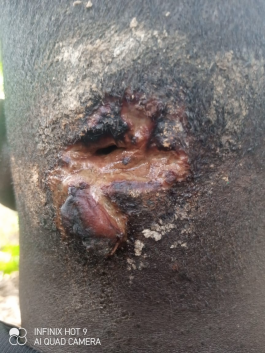Shadrach Siaway, a 26-year-old motorcyclist from Nimba County, Liberia, is a survivor clinging to life and seeking justice. Six months prior, he was the victim of a brutal attack, shot in the back of the head at close range with a single-barreled pistol. The attack, which occurred on the Gbahn-Ganta highway while he was transporting a passenger, left him with at least 30 bullets lodged in his skull. He miraculously survived the initial assault, but now endures constant pain and the looming threat of paralysis. Siaway urgently requires advanced medical treatment abroad to remove the remaining bullets, a procedure unavailable in Liberia. His plea for justice is compounded by his desperate need for financial assistance to access this life-saving surgery.
Siaway’s account of the attack is chilling. He picked up a passenger who claimed to be visiting his mother. Moments later, the passenger, one of three assailants, shot him in the head from the backseat. The seemingly random and brutal nature of the attack leaves Siaway grappling with not only the physical trauma but also the psychological scars of such a violent encounter. His survival, against such odds, underscores the urgency of his plea for help and the need to bring the perpetrators to justice. Left untreated, the remaining bullets in his skull pose a constant threat to his health and well-being.
Siaway’s struggle is further complicated by the alleged release of his attackers. While he was recovering, he received the devastating news that the perpetrators, initially arrested and even found with the weapon used in the attack, were freed. This alleged release, combined with the lack of substantial progress in the case, has left Siaway feeling abandoned and desperate. He claims that Nimba County Attorney John D. Miah ordered the release, an accusation that Miah vehemently denies. This conflicting information adds another layer of complexity to an already tragic situation, highlighting the need for a thorough and transparent investigation.
Siaway recounts the harrowing medical journey he has endured since the attack. A herbalist managed to remove 16 of the bullets, but the remaining 14, lodged near his spine, require specialized surgical intervention only available abroad. Doctors have recommended treatment in countries like China, India, or Ghana, but the financial burden of such medical care is insurmountable for Siaway and his family. He has undergone X-rays, scans, and MTT examinations, all confirming the presence and dangerous location of the remaining bullets. Each day, the pain intensifies, serving as a constant reminder of the violence he endured and the urgent need for medical intervention.
While the County Attorney denies direct involvement in the release of the suspects, he confirms the case is still open and urges Siaway to appear before the Grand Jury. He clarifies that the authority to release suspects rests solely with the judiciary. He attributes the delay in proceedings to the court’s schedule and the significant number of cases. However, this explanation offers little solace to Siaway, who faces a daily battle for survival. The bureaucratic hurdles and legal processes feel like insurmountable obstacles in his quest for justice and essential medical care.
X-ray results corroborate Siaway’s account, clearly showing the remaining bullets lodged in his skull. This medical evidence underscores the gravity of his situation and the urgent need for intervention. Siaway’s story is a testament to the human capacity for resilience, but also a stark reminder of the vulnerability of individuals in the face of violence and the critical need for access to justice and adequate healthcare. His plea for help is a call for action, urging not only the Liberian authorities to ensure justice is served but also the global community to offer support to a man fighting for his life.


